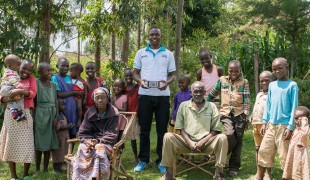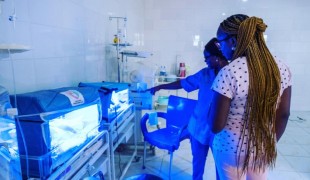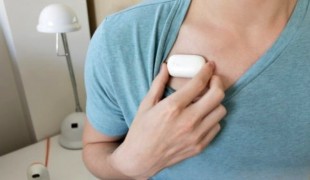- 7798
- 514
- 12
- 13
- 0
- Help Ukraine
About the solution
The app is free, and the name goes under the acronym CRADLE, ComputeR Assisted Detector of LEukocoria. It works by searching through all of the pictures stored in the mobile device in order to detect white eye. It can also be used in scanning mode by turning the smartphone into a crude ophthalmoscope and allowing the user to wave the device over the child’s eyes. Green boxes appear around the eyes, and if a reflection is detected, the box turns red.
It all started in 2009, when Noah was diagnosed with a retiblastoma, after Bryan’s wife, Elizabeth, noticed a white reflection that sometime appeared in her son’s eyes, in pictures. The mother mentioned this to the pediatrician, who sent them to an ophthalmologist who told them Noah had tumors in his eyes.
After being diagnosed, the baby went through three months of chemotherapy, 30 cycles of radiation and then had his right eye removed.
During the treatment, Bryan started thinking how long that white reflection, known as leukocoria, had been showing up in the photos. Then he had an idea: what if the camera had been programmed to detect leukocoria?
In 2010 the professor decided to take action. He began reviewing all the pictures the family had taken of Noah since his birth. He found out that the first signs of leukocoria showed up when the baby was only 12 days old.
“It started increasing in frequency and showing up in more and more in pictures. By the time he was 4 months old, it was showing up in 25 percent of the pictures taken of him per month”, the inventor explained.
CRADLE was developed two years later, with the help of Baylor University professor Greg Hamerly and graduate students Ryan Henning and Erick Huntley. It was launched in 2014, for iOS, and then in 2015 it was released for Android. It can be found by in the Apple Store and Google Play Store by searching the term “white eye detector.”
“I was chipping away at this while I worked on other stuff. But I just kept telling myself, I really need to do it. This disease is tough to detect. Not only could this software save vision, but it can save lives”, Bryan said.
The app has been downloaded by several families, and it has helped to diagnosed several eye conditions, such as Coats’ disease and myelin retinal nerve fiber layer.
“It’s going to be tough to eliminate vision loss, but this software can eliminate the death associated with this disease just by early diagnosis. At the worst, they lose one or both of their eyes – but they still have their life", the father stated.
Bryan is working on improving the software and getting the word out about this solution.
More info: http://apple.co/11z4LGl
Adapted from: http://bit.ly/2iZArD0
This solution shall not include mention to the use of drugs, chemicals or biologicals (including food); invasive devices; offensive, commercial or inherently dangerous content. This solution was not medically validated. Proceed with caution! If you have any doubts, please consult with a health professional.
DISCLAIMER: This story was written by someone who is not the author of the solution, therefore please be advised that, although it was written with the utmost respect for the innovation and the innovator, there can be some incorrect statements. If you find any errors please contact the patient Innovation team via info@patient-innovation.com
-
-
567
-
0
-
9013

App to help diagnose eye conditions
-
-
-
317
-
0
-
3524

Turning a parent's worst nightmare into a blessing for babies with jaundice.
CAREGIVING
Jaundice
Treatment/Surgical device
App (Including when connected with wearable)
Jaundice (yellowing of the skin or eyes)
Preserving Organ Function
Restoring Skin Health
To improve Treatment/Therapy
Support on Puerperium/Post-childbirth
Raise awareness
Caregiving Support
Gastroenterology
General and Family Medicine
Pediatrics
Niger
-
-
-
641
-
0
-
9546

Patient develops wearable for Asthma
VENTILATION
CAREGIVING
Asthma
Assistive Daily Life Device (to help ADL)
Treatment/Surgical device
App (Including when connected with wearable)
Pharma
Improving respiratory function
Promoting self-management
Manage Medication
Preserving Organ Function
To implement a diagnostic tool
Alleviating Allergies
To improve Treatment/Therapy
Preventing (Vaccination, Protection, Falls, Research/Mapping)
Caregiving Support
General and Family Medicine
Immuno-allergology
Pneumology
Australia
-
 en
en